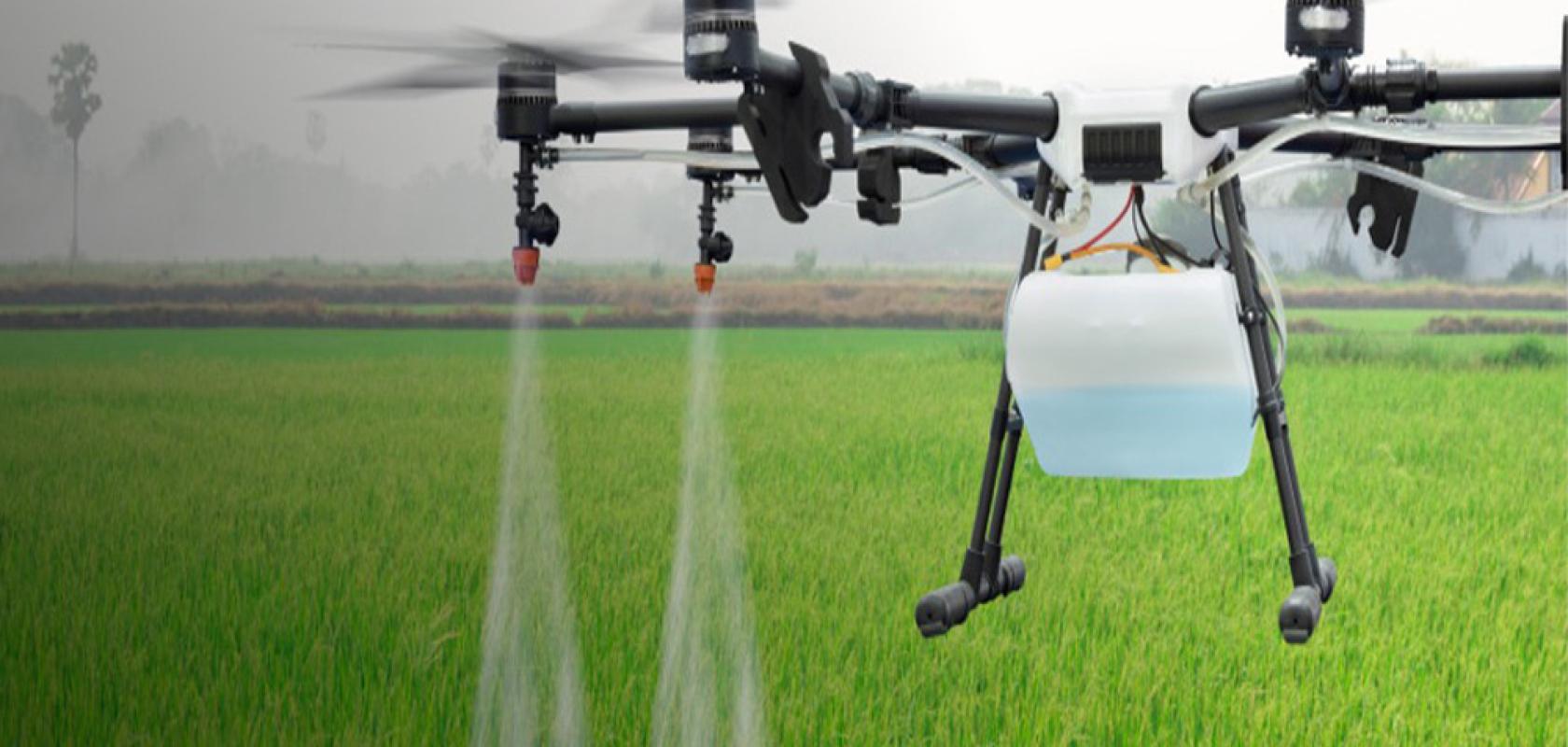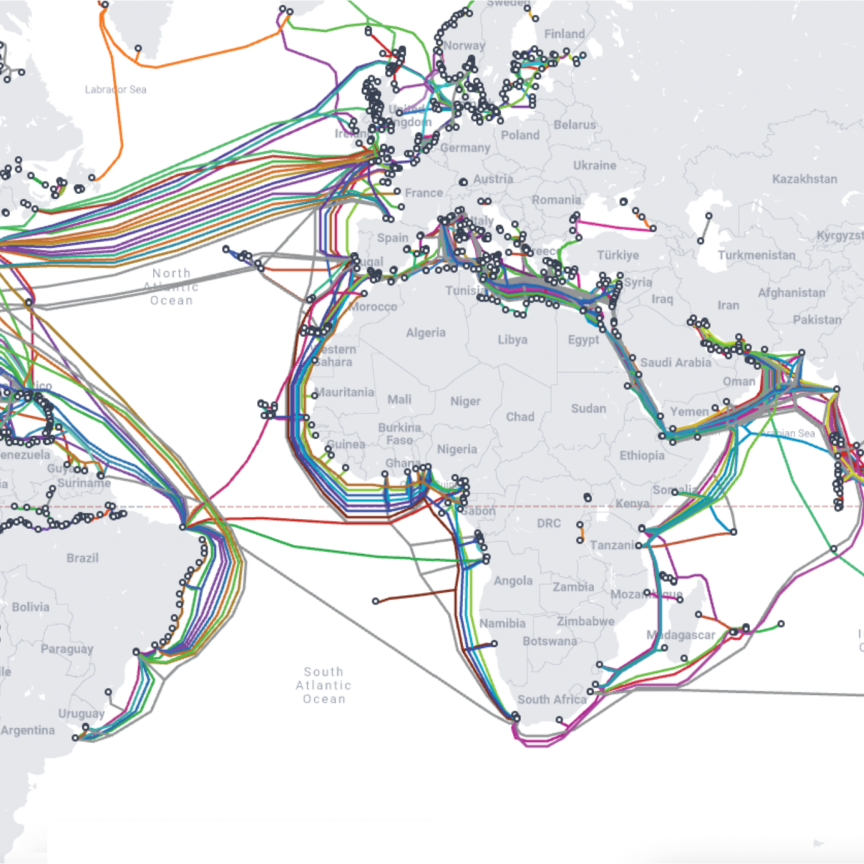Technology created by a University of South Florida public health researcher is being implemented by insect control agencies throughout Africa.
Associate Professor Benjamin Jacob created a smartphone app that pairs his algorithm with a drone and satellite images to identify locations of previously unknown mosquito breeding habitats to treat them within the same day. His technology has proven to be so successful, he launched Seek and Destroy, a program that allows him to train government agencies how to use the app in infectious areas in Cambodia, Uganda, Kenya and Rwanda – allowing them to quickly and efficiently direct resources to vulnerable areas before disease outbreaks can occur.
Jacob has focused much of his research in Uganda, where malaria is the leading cause of death, especially among children under five. As published in the American Journal of Entomology, he discovered that each of the 120 homes he studied was infested with at least 200 mosquitoes. With the help of the local insect control officers he trained, Jacob destroyed 100% of the identified habitats in 31 days and eliminated the blood parasite level in previously treated and suspected malaria patients in 62 days.
The system works by identifying specific environments and organisms by their spectral fingerprint associated exclusively with a species or habitat. For Seek and Destroy to be successful, Jacob trained the drone to sense and capture image datasets through his algorithms that allow the system to understand key features, like mud or vegetation, based on their fingerprints. Each image is then processed and gridded with identified sources of water on those surfaces.
We spoke to Benjamin Jacob while he was training local communities in Angola. He discussed the important factors in implementing technology for use in new environments and with new end users.
How does the technology detect malaria habitats?
I use satellite data in combination with drone technology, which can be controlled within a smartphone application. Drones have been used before to look for mosquito habitats, but they were impeded by canopy cover, cloud shadows, and rain. This technique is more effective because I'm using a combination of different algorithms, for example Random Forests, which allows me to determine the spectral signature of a particular habitat.
For example, let's say I'm looking at satellite data from GPS coordinates, a 46cm resolution of a particular habitat, such as a rock quarry mosquito habitat. Once I'm able to get the RGB values, which is the reflection of the red, green and blue wavelengths, I can now use that combination within a Kriging interpolation algorithm in GIS, which has infused into the dashboard inside of a smartphone, for example, and then find all of the other habitats within the satellite image area, such as a village in eastern Angola. By doing so, we're saving time looking for where these habitats are.
With the GPS points, we’re then able to download them onto a drone, which will hover over the GPS location, and then disperse a small amount of targeted insecticide.
Most of the mosquito habitats that form are very small; they are formed when water collects in vehicle ruts, commercial roadside ditches, or even footprints. These smaller habitats, if easily accessible, can simply be buried by young people (who we also train), but for the larger habitats we use drones. The key point is that we can determine where most of the habitats are across sparse areas and in a short amount of time.
If you send a ground survey, and you've got a couple acres of an agro-ecological ecosystem near a village, for example, how are you going to localise all of the habitats if there is tall grass and canopy? By using the spectral signature mechanism, we're able to find these habitats very quickly and very efficiently. And the rate at which habitats are detected has never fallen below 92.57%.
What has been key to people adopting the technology?
I think making a solution that actually solves a problem effectively is important, more efficiently or cost-effectively than existing methods. So, we are using less chemicals, and it's cost-friendly, which is important in countries where there is less money to invest. The drone only requires a battery change every 45 minutes, and can carry a few litres of insecticide.
The technology is very teachable. It’s all controlled through apps that are easy – and even fun – to use. During my current placement in Angola, I am training 75 young people across five villages about habitat burial and drone operation. They love learning about the technology, and once you start talking handheld, it almost becomes like a video game. And that's what I wanted, actually, because most of the people that will be taking this project forward are teenagers. And they get to go out to the fields and do something that's not only fun, but that they earn money via local government scholarships.
Social cultural differences play a role in technology adoption. In small African villages, there's no Wi-Fi in certain locations and oral communication becomes a methodology. We’re not trying to change this social culture, but just infuse technology into their way of life. My goal is that the local people adapt to it. It can’t be me flying to Africa to continue the project, it has to be sustainable.
I think another point is how you sell the benefits of the technology to the people that will ultimately be using it. I hate to say this, but a lot of entomologists that came to Africa in the past were just selling the concept of insecticide dispersal, which I think was a travesty, but it was primarily because they didn't understand the genomics of the mosquito. The mosquito is highly effective at genetically adapting.
Previously, people were going out to find habitats, getting GPS points, putting them on spreadsheets, time-lagging and then they would send out teams to sample the habitat. By this time, people living nearby were bitten and infected, which doesn’t help to achieve buy-in. Malaria mosquitoes habitats emerge very quickly – if a truck makes an indent on a gravel road and it rains, you have a habitat.
We can now put the breeding site points into a handout which the young project participants can bury. I think we buried well over 400 habitats today in Angola. For the larger sites, the drone will be used.
With this method we are stopping transmission by attacking the vector source. Other methods to reduce transmission have included, for example, the distribution of bed nets, which is only playing defence, and it doesn’t fit into the lifestyle here. They are not used because it is too hot, and they are impractical for nursing mothers, for example. Bed nets become fishing nets here, unfortunately. I'm not saying take away the bed net, but why not add a technological tool to the existing solutions?




